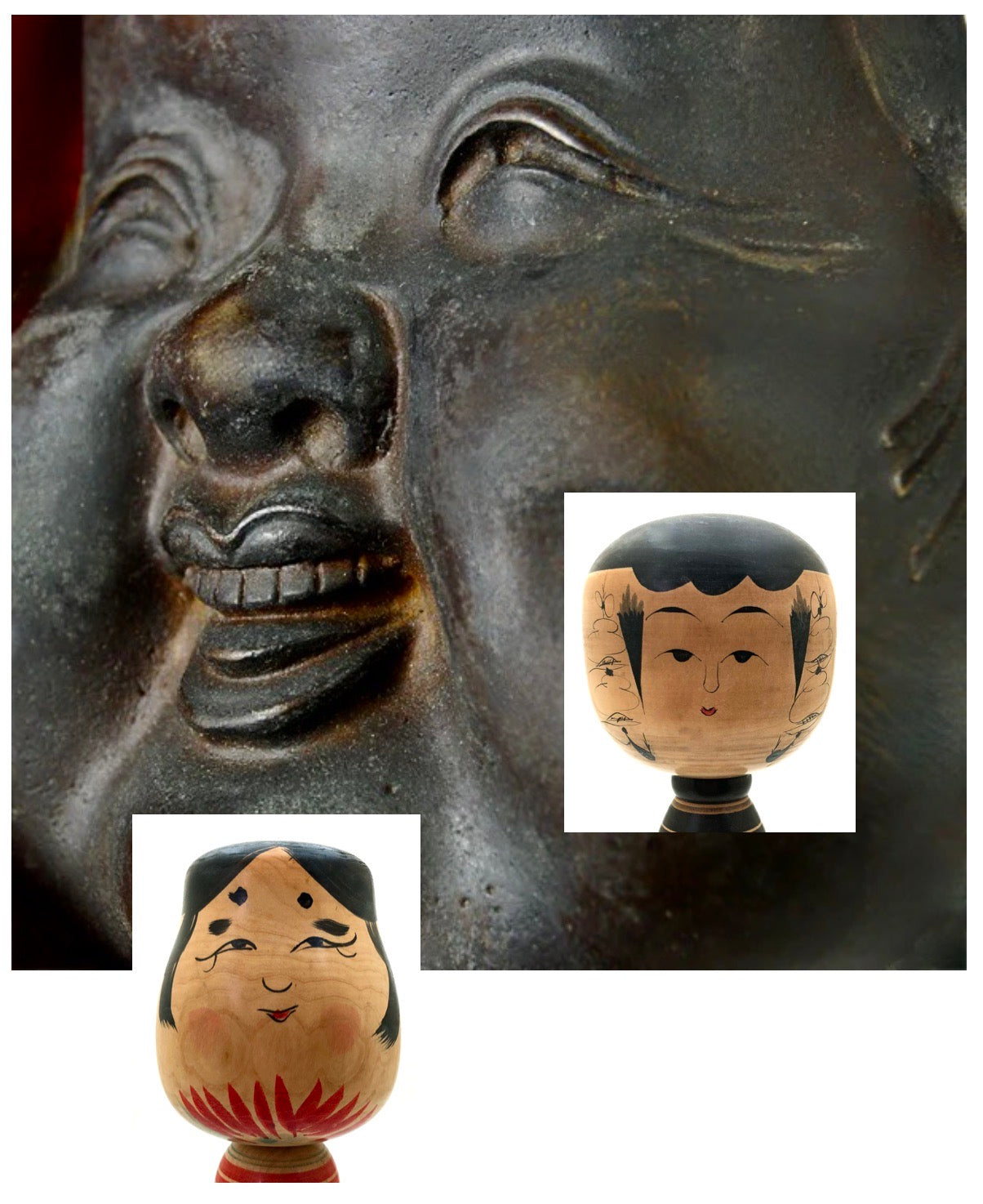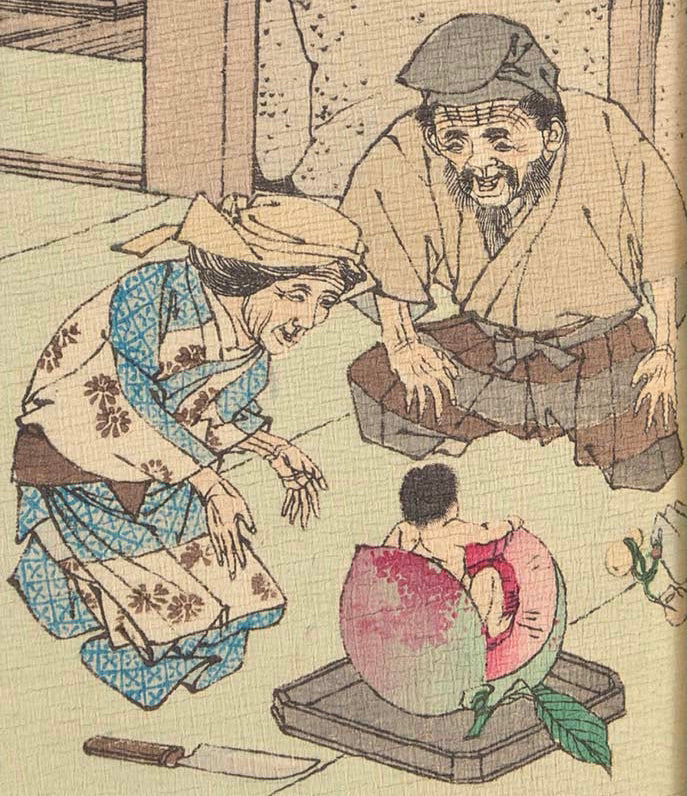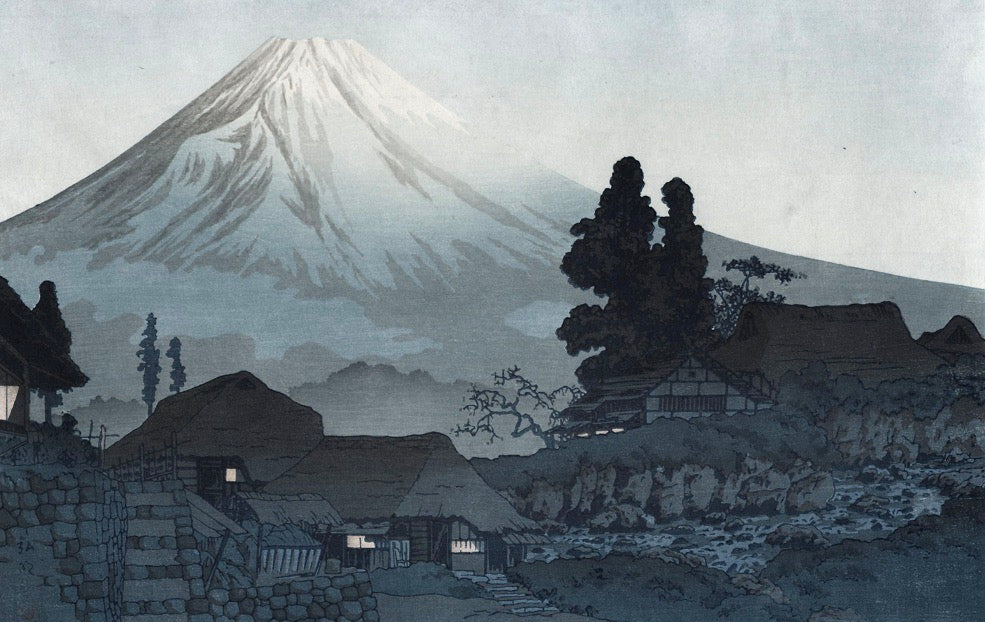The essential element of Zen Buddhism is found in its name, “Zen” meaning “meditation.” Zen teaches that enlightenment is achieved through the profound realization that every individual is already an enlightened being. The first Japanese artists to work in this medium were wood craftsmen, (Kiji-ya) and members of the Zen sect or monks who carved and painted, in a quick and evocative manner, to express their spiritual views and personal convictions.
These wooden lathe-turned-Shinto, Buddhism, and Zen Buddhist figures are treasured and revered because of their sacred religious optimism through emphasized simplicity and the importance of the natural world generating a distinctive aesthetic, which is expressed by the terms wabi and sabi. Each of these hand-painted and crafted amorphous concepts is infused with expressing a sense of rusticity, melancholy, loneliness, naturalness, and the passing of time. This Kokeshi style has always been considered more expressive and more beautiful than the standard hand-painted three-dimensional forms that emphasize traditional everyday apparel and hair fashion. While the latter pleases the senses, the former stimulates the eye, mind, and emotions to contemplate the essence of reality beyond our own. This artistic sensibility has had an enormous impact on all levels of Japanese culture up to modern times.
From our research, we have seen very few Kokeshi in the image representing the Japanese Seven Lucky Gods: Hotei, Fukurokuji, Jurojin, Ebisu, Daikoku, Benzaiten, and Bishmonten with the exception of the rare set in the image below of Festival lathe-turned and meticulously hand-painted dolls with their unique garments and individual accouterment, (each ranging approximately 8-0” high).

The craftsmen known for producing Kokeshi images of “Kami” (deity, divinity, or spirit) which this article introduces, came from Japanese Traditional Kokeshi Families (Kei), such as Yajiro, Tsuchiyu, Tougatta, Kijiyama, and produced lathe-turned forms in the styles of Buddha, Bosatsu Kannon, Daruma and Okame. The artists and carvers producing this type of three-dimensional and painted figures. Note: the major emphasis is on the head, facial details and an abstract impression of "Nirvana" (profound peace of mind), of which some images are also detailed as part of the garment, all celebrating Buddist symbolism. Known artists include: Abo, Muchihide; Hasegawa, Tatsuo; Kato, Kuen; Sato, Tatsuo (1928-); Sato, Yoshiaki, (1936-); Sato, Terou (1919-); Sato, Ushizo (1889-); Sato, Bunroku; Sato, Kesakichi; Morio; Shido, Shouzan; Shibuya, Shinraku; Suizan, Shinobu; and Yusa, Fukuju. (Other artists may exist but, their works have yet to be discovered or identified).
RELIGIOUS WOMEN’S HAIRSTYLE FOUND ON KOKESHI —
Hair has long had a social, religious, erotic, and psychological significance and is usually seen as a tuft of hair on the back of the head cascading down the back. For the Buddhist woman, one of the most important aspects is their hair. This long tuft of hair has the purpose of being a perch for gods. This is based on what was known as the YORISIRO phenomenon and it is a very important Shinto concept of “purity”, as opposed to the Miko's or Geisha’s need to attract by incorporating "Flashy" hair ornamentations. The religious Buddhist woman’s hair is void of those accessories because it is felt that such ornamentation encouraged disrespect and a self-indulgent lifestyle. Instead, the Buddhist woman gathers their hair, wrapped and rolled with a thick paper called Tanzaku, and supposedly used to attract sacred spirits through her support for her dedication to a monastic lifestyle.

Below are a few of the “rare” variations of the traditional Kokeshi that incorporate expressive facial features of Buddha and other religious figures cited in the Folk Art genre’.




